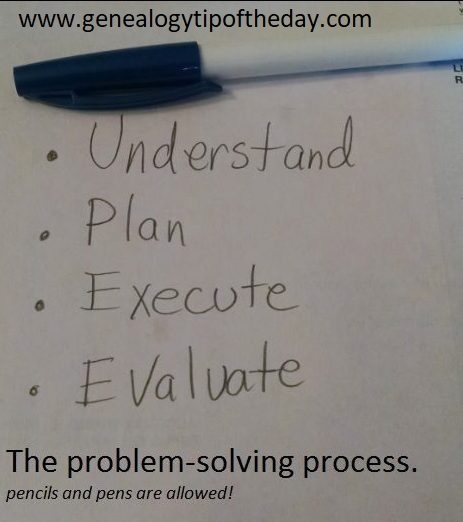The problem-solving approach developed by George Polya has been used in math courses for years. With a little adaptation, genealogists can use it as well. The four steps can be summarized as:

- Understand-learn all about your relative, the time period, the location, and the records
- Plan–decide what to search and how to search it
- Execute–do it…and track what you do
- Evaluate–analyze what has been found, integrate it into what is already known.
If you solved the problem, then there are new ones to solve. If you didn’t solve it, go back to the understand step. That one requires the most work, particularly when research in a new area or time period is being undertaken.








One response
The very first point can be the main hurdle . The time period and the location will usually be covered by text books or websites (though maybe in a language you don’t understand) but the records may be hidden in an archive where only a personal visitor could recognise their relevance or even find out that they exist.